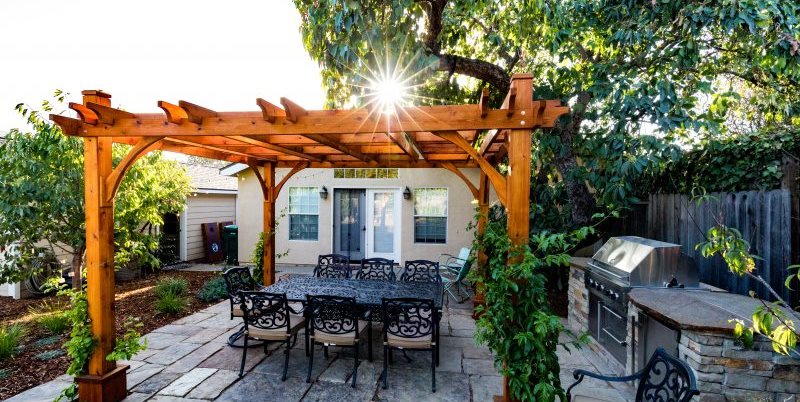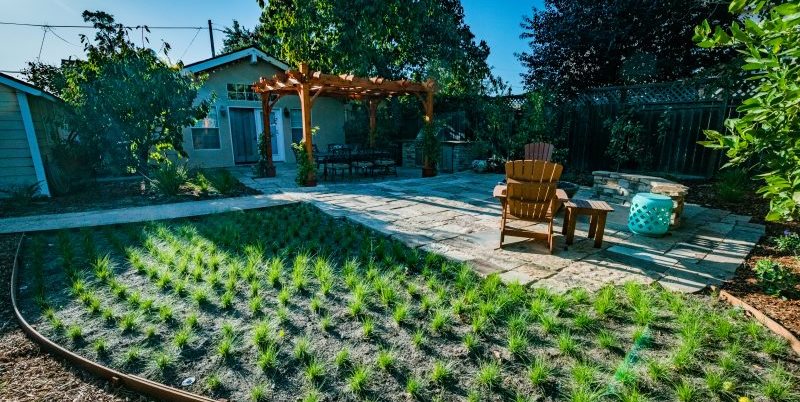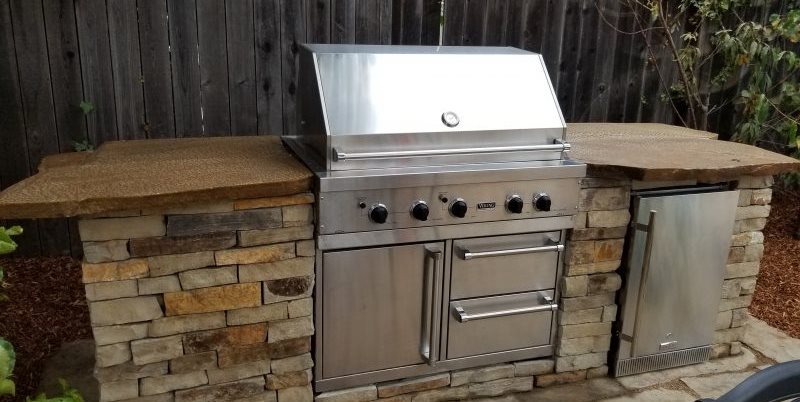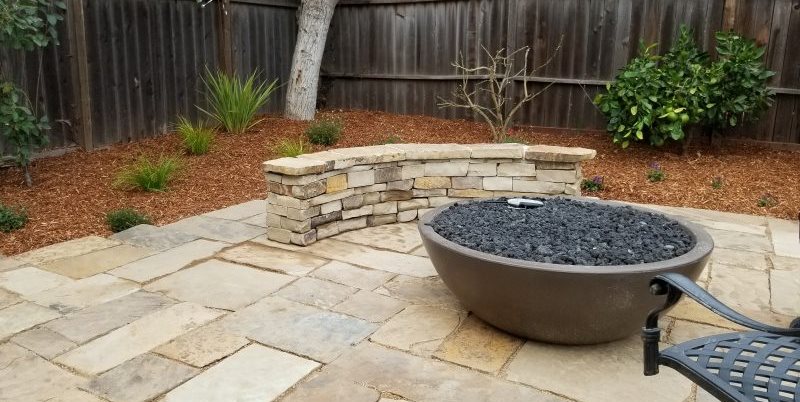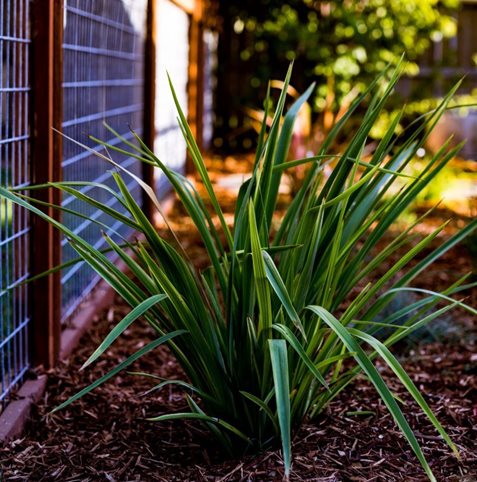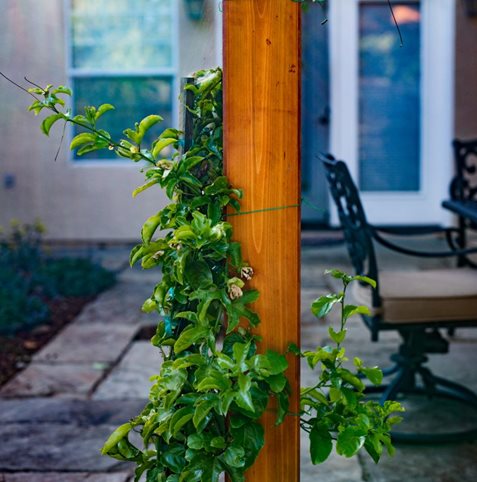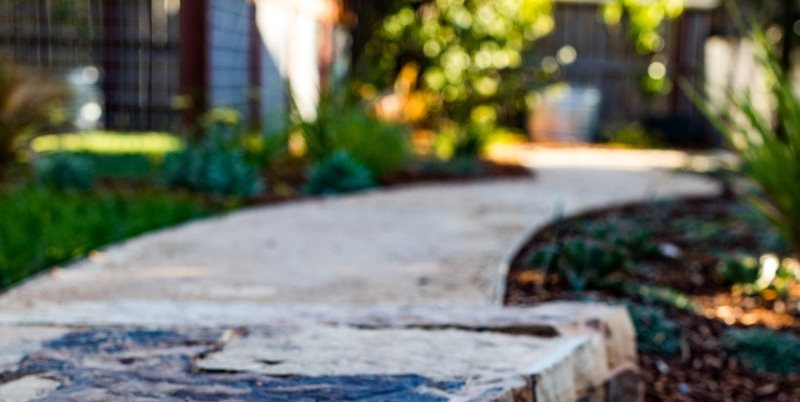Creating an Eco-Friendly Retreat
See how a combination of sustainable landscaping, permeable hardscaping, and rainwater harvesting transformed a traditional backyard into an environmentally friendly outdoor living areaProject Details
Location: San Luis Obispo, Calif.
Cost: $75,000
Start-to-finish time: 3 weeks
Landscape contractor: Greener Environments, Los Osos, Calif.
Native and Water-Wise Plant Choices
California field sedge (Carex praegracilis)
Silver carpet (Dymondia margaretae)
New Zealand flax (Phormium)
Catmint (Nepeta)
Salvia
Lomandra grass
Red-hot poker (Kniphofia)
Yarrow (Achillea millefolium).
Edible plants: Several varieties of stone fruits, berries, citrus, and artichokes
Replacing a large water-thirsty lawn was just the beginning of this dramatic backyard makeover. The entire space was overhauled to become a complete outdoor living area where the homeowners could relax, entertain guests, grow fruits and vegetables, and even raise chickens. In addition to enhancing the overall usability and aesthetic appeal of the yard, the environmental impact was also dramatically reduced.
Design Goals
“One of the main objectives for this project was to make it into a kind of eco-friendly retreat for our clients,” says Luke Huskey of Greener Environments, a company that specializes in sustainable landscape design and construction. “For entertaining guests, the homeowners wanted to remove a small outdated concrete patio and build a large stone patio, including a fire pit, pergola, dining area, and outdoor kitchen. They wanted to still have some lawn area available, but wanted all the plants to be drought tolerant and low maintenance. They also wanted all hardscapes to be permeable to allow rainwater penetration.”
Landscaping Solutions
Everything brought into the space and all of the techniques used were intentionally chosen to reduce the long-term environmental footprint of the yard. “Our philosophy is the more durable we can make a landscape by using meticulous construction techniques and high-quality products, the longer it will last without needing renovations, hardscape replacement, or plant replacement,” Huskey explains.
The redesign includes a large patio with a fire pit, seat wall, pergola, and outdoor kitchen. For the patio, Huskey chose a snap-cut natural stone rather than using randomly shaped flagstone pieces to give it a clean yet natural look. In order to solve drainage issues and to create separate outdoor rooms for the fire pit and dining area, he created an upper and lower tier for the patio. The patio is also designed to be permeable and diverts excess rainwater to an underground drain leading to a large, buried dry well.
As a low-water alternative to a grass lawn, Greener Environments planted plugs of native California field sedge, which will fill in to produce a meadow-like, low-maintenance lawn area. The yard also features an abundance of native and water-wise groundcovers and ornamental plants.
“We ensured the plantings would have low water needs, low maintenance requirements, and even provide habitat for beneficial insects and birds. Edible plants were also used to provide food for the homeowners, which will reduce the amount of waste, fuel, and water required for store-bought produce,” says Huskey.
Other Water-Saving Strategies
The landscape was designed to keep all of the rainwater onsite and decrease stormwater runoff through the use of the permeable hardscapes and underground well. Another strategy Huskey uses in his landscapes to make them more sustainable is to improve the health of the soil.
“We use a lot of compost and natural mulch to encourage rapid decomposition in order to create a diverse soil ecosystem. By using these methods and others, such as no synthetic herbicides and no fertilizers, we facilitate soil that produces more resilient, vibrant, and low-maintenance plants,” he says.
Huskey also installed a Rachio smart irrigation controller, which uses data about the weather, soil type, plant types, and sun exposure to prevent overwatering. The controller can be programmed directly from a smart phone or computer and provides detailed information on the amount of water usage.
“Now the owners can sit back and enjoy this new addition to their home. We foresee a lot of get-togethers with friends and relaxing evenings after work. The long-term benefits our clients get to experience is truly a gratifying part of the work we do,” says Huskey.
Related Reading:
Permeable Paving
Principles of Sustainable Landscaping

 Backyards
Backyards
 Front Yards
Front Yards
